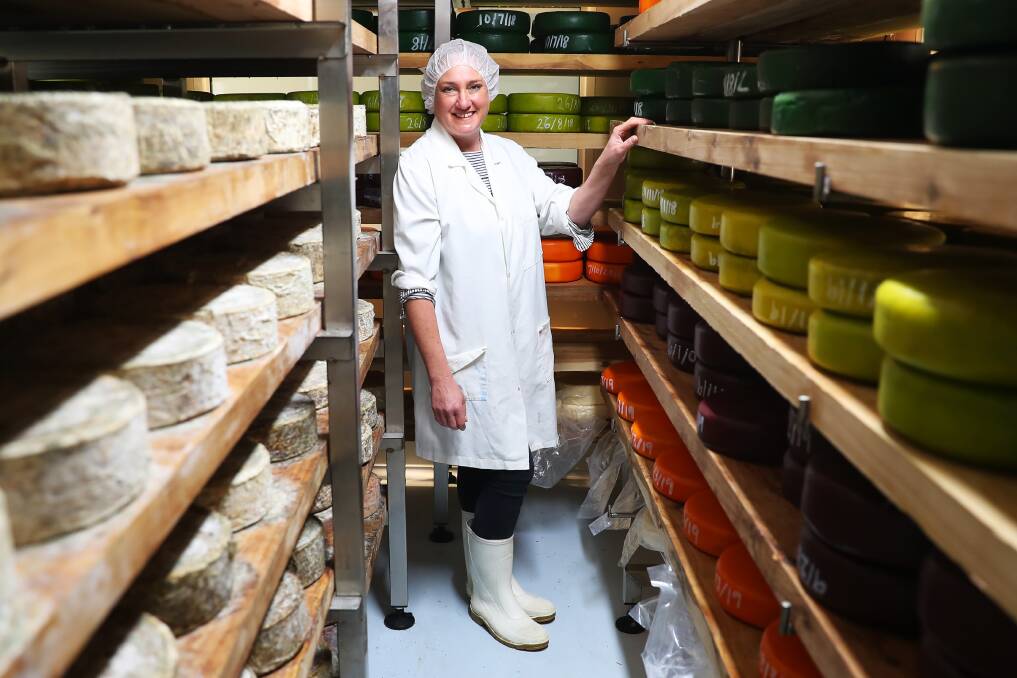Discovering Melbourne Made Cheese: Why Floridia Cheese Is a Must-Try
Discovering Melbourne Made Cheese: Why Floridia Cheese Is a Must-Try
Blog Article
Unlocking the Keys of Artisanal Cheese Making: A Step-by-Step DIY Overview
In the world of culinary craftsmanship, artisanal cheese making stands as a testimony to the fragile balance between practice and innovation. Each step in the procedure, from picking the right milk to refining aging strategies, holds within it a wide range of knowledge passed down with generations. As we start this trip to debunk the art of creating splendid cheeses, we are encountered with a tapestry of abilities and keys waiting to be unraveled. Join us as we check out the ins and outs of this ancient craft, where persistence, art, and scientific research assemble to create tastes that tantalize the senses.
Selecting the Right Milk
When getting started on the trip of artisanal cheese making, the choice of milk plays an important role in establishing the high quality and characteristics of the last product. The kind of milk chosen impacts the taste, structure, and overall profile of the cheese.
When selecting milk for cheese making, it is essential to think about the fat web content. Higher fat web content in milk can result in a creamier and richer cheese, while lower fat web content may cause a drier and firmer structure. In addition, the source of the milk, whether from cows, goats, sheep, or buffalo, adds distinct flavors and features to the cheese (Melbourne Made Cheese). Each kind of milk brings its own nuances, permitting a variety of cheese selections to be crafted based upon the chosen milk. Eventually, the choice of milk is a basic decision that sets the foundation for an effective artisanal cheese-making undertaking.
Culturing and Coagulating
To launch the cheese-making procedure, the essential actions of culturing and coagulating must be thoroughly performed to transform milk into curds and whey. Culturing involves introducing beneficial bacteria to the milk, which then begins the fermentation procedure. These microorganisms transform lactose (milk sugar) right into lactic acid, producing the acidic atmosphere needed for coagulation. The kind of culture used can considerably impact the flavor, appearance, and ripening of the last cheese item.

The timing and temperature control throughout culturing and coagulation are essential elements that influence the final result of the cheese. Proper implementation of these steps is necessary to make certain the preferred appearance, flavor, and uniformity of the artisanal cheese being created.
Draining Pipes and Pressing Curds
After the milk proteins have actually coagulated and the curds have been cut to launch whey, the following YOURURL.com crucial step in artisanal cheese making entails draining pipes and pressing the curds to accomplish the preferred appearance and consistency of the final cheese item. The time for draining pipes can vary depending on the type of cheese being made and the preferred wetness web content.
Once the curds have adequately drained pipes, the following action is pressing. Pressing assists get rid of any kind of remaining whey and compacts the curds to form a solid cheese wheel. Pushing can be done making use of specialized cheese presses that use consistent and gentle pressure over a time period. The duration and stress used throughout pressing will certainly affect the final texture of the cheese, from creamy and soft to difficult and firm. Appropriate draining and pressing are vital actions that dramatically influence the top quality and features of the artisanal cheese being generated.
Aging and Flavor Methods
Applying careful aging and flavor methods is crucial in enhancing the deepness and intricacy of artisanal cheeses, elevating their preference accounts to charming degrees of refinement and class. Aging plays an essential duty in developing the special tastes and textures that differentiate artisanal cheeses.
Seasoning techniques likewise add significantly to the final taste of artisanal cheeses. Cheesemakers might pick to present additional flavors by integrating active ingredients such as natural herbs, spices, and even fruits into celebrity throughout the manufacturing procedure. Additionally, some cheeses are washed or scrubed with different fluids, such as salt water or alcohol, to boost their go to this web-site textures and flavors.
Wrapping and Storing Cheeses
.jpg)
Final Thought
To conclude, grasping the art of artisanal cheese making entails thoroughly picking the right milk, complying with specific culturing and coagulating processes, draining pipes and pushing curds efficiently, and using numerous aging and flavoring methods. By adhering to these steps vigilantly and with focus to information, you can create your own tasty and one-of-a-kind cheeses at home. Keep in mind to cover and save your cheeses correctly to make certain optimum flavor and structure advancement. Delighted cheese making!
Each kind of milk brings its very own subtleties, enabling for a large variety of cheese ranges to be crafted based on the picked milk.After the milk healthy proteins have actually coagulated and the curds have actually been cut to release whey, the next important step in artisanal cheese making includes draining and pressing the curds to achieve the wanted appearance and consistency of the last cheese item. A lot of cheeses must be covered in wax paper or cheese paper to enable them to breathe while protecting them from drying out. For cheeses that require to proceed aging, such as bloomy skins or washed peels, guarantee they are kept in an amazing atmosphere like a cheese cave or a fridge established to the suitable temperature. By paying focus to the covering and storage of artisanal cheeses, cheese makers and fanatics can protect the integrity of these delicacies and totally appreciate their intricate tastes.
Report this page